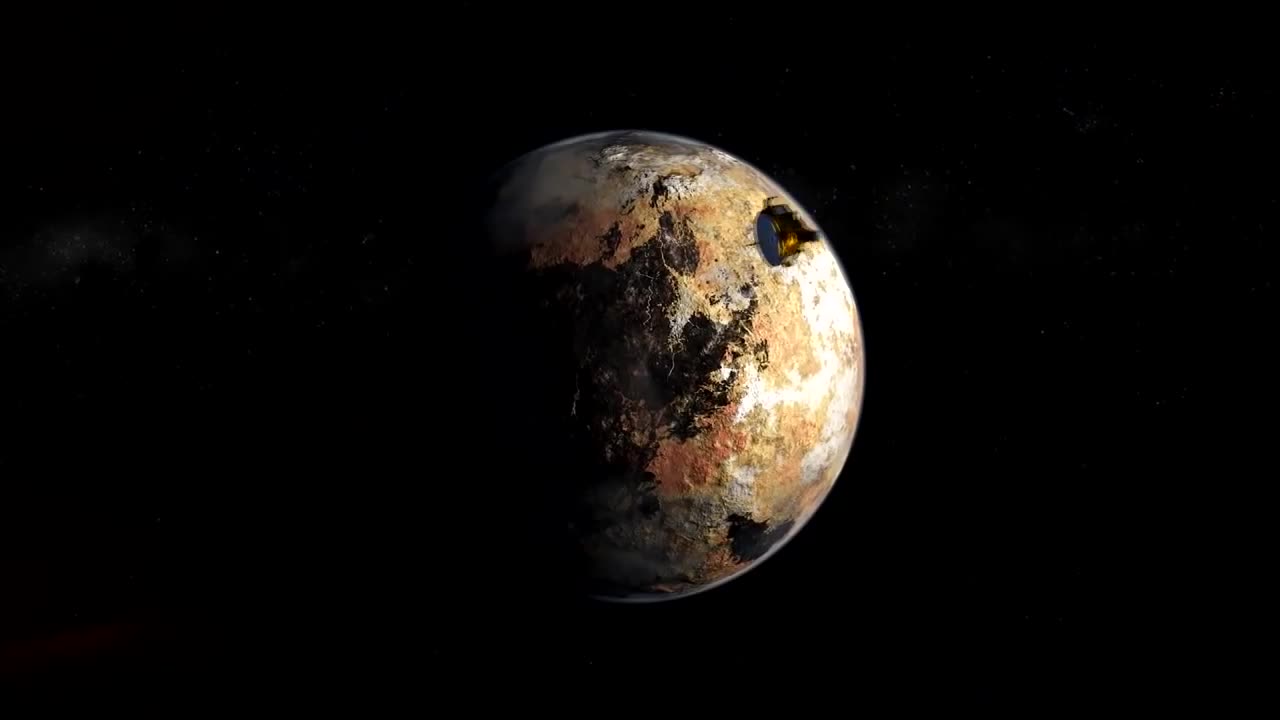Premium Only Content

A year of pluto-"dwarf planet"
Pluto is a relatively small celestial object in our solar system, situated beyond the orbit of Neptune. It was formerly considered the ninth planet but was reclassified as a "dwarf planet" in 2006 due to its characteristics differing from the traditional definition of a planet. Pluto has a diameter of approximately 2,377 kilometers (1,477 miles) and is composed primarily of rock and ice. It has a unique reddish-brown coloration on its surface, possibly due to the presence of complex organic compounds.
Pluto has a highly elliptical orbit, taking about 248 Earth years to complete a single orbit around the Sun. Its orbit is inclined and tilted relative to the plane of the solar system, causing its distance from the Sun to vary significantly during its orbit. Pluto has five known moons: Charon, Styx, Nix, Kerberos, and Hydra. The largest moon, Charon, is unusually large compared to Pluto, leading some scientists to consider the Pluto-Charon system as a binary planet.
Pluto's distant location and small size make it a challenging object to study in detail, but advancements in space exploration have provided valuable insights into its composition and characteristics. The New Horizons spacecraft conducted a flyby of Pluto in 2015, capturing close-up images and data that revealed a diverse and complex surface with features such as ice mountains, nitrogen ice plains, and a possible subsurface ocean.
-
 LIVE
LIVE
FusedAegisTV
10 hours agoStreet Fighter 6 FINALS, CS2 Semifinals | $1,250,000 | Riyadh, Saudi Arabia EWC 2025 !estv
155 watching -
 LIVE
LIVE
GritsGG
1 day ago36 Hour Stream! Most Wins 3420+ 🧠
1,827 watching -
 40:42
40:42
SouthernbelleReacts
1 day ago $0.02 earned😂 American Pie (1999) Reaction | Iconic Teen Comedy, High School Chaos & 90s Nostalgia 🥧
1.34K1 -
 LIVE
LIVE
LumpyPotatoX2
1 hour agoBecome a HellDiver Today - #RumbleGaming
69 watching -
 LIVE
LIVE
Midnight In The Mountains
3 hours agoGaming w/ PER·SE·VER·ANCE | Sassy Saturday Fortnite | with the Midnights!
59 watching -
 LIVE
LIVE
shyboyking
1 hour agoThe Bots Of The Bots !!!😎
68 watching -
 24:06
24:06
True Crime | Unsolved Cases | Mysterious Stories
5 days ago $0.13 earnedShe Traveled Alone… and Never Came Back – 5 Mysterious Unsolved Cases (Part 6)
7151 -
 27:23
27:23
Clickbait Wasteland
14 hours agoAsking New Yorkers Who They Support For Mayor: Staten Island
1.17K2 -
 16:58
16:58
World2Briggs
22 hours agoThe California Rant: Point Blank With No Fluff or BS. California Gold?
929 -
 17:49
17:49
Chris Harden
1 day ago $0.01 earnedThe Glass Capital That Shattered | The Decline of Streator, Illinois
920